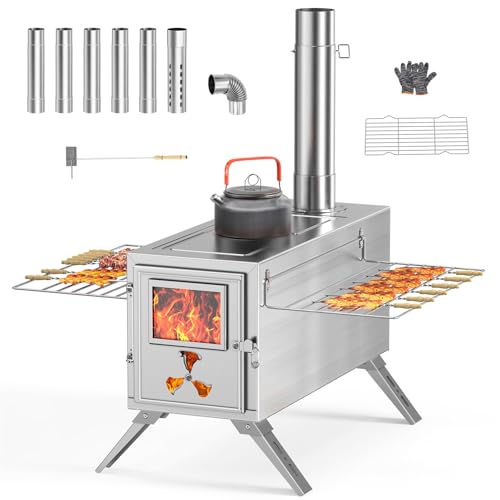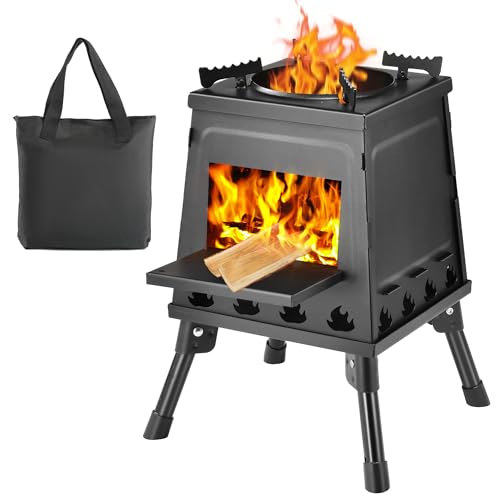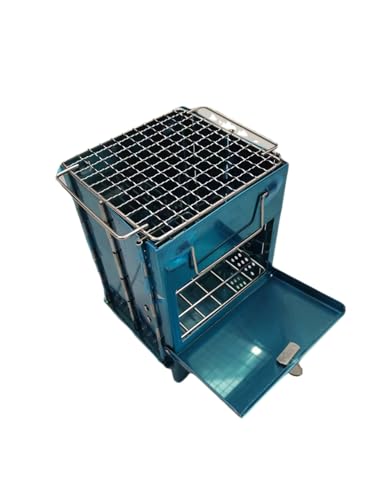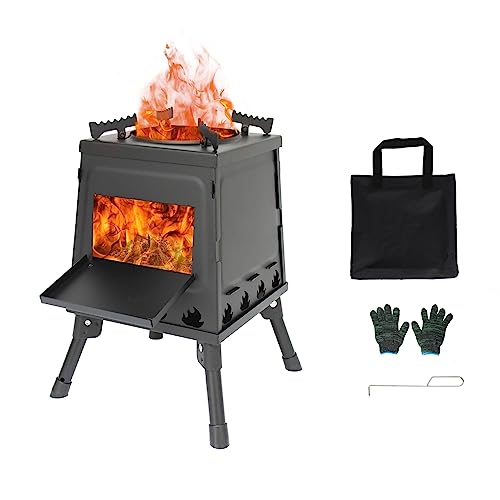In the great outdoors, where the beauty of nature often meets the need for practical solutions, portable outdoor wood burning stoves have garnered popularity among camping enthusiasts. These stoves offer an efficient, eco-friendly way to cook meals, boil water, and provide warmth—all while embracing the rustic charm of wood fire. This guide delves into the numerous advantages of using a portable wood burning stove for camping, factors to consider when purchasing one, and tips for safe usage.
Advantages of Portable Outdoor Wood Burning Stoves
Using a portable wood burning stove offers various benefits that make camping more enjoyable and sustainable:
-
Eco-Friendly Cooking: Unlike propane or gas stoves, wood burning stoves rely on natural fuel, reducing reliance on fossil fuels.
-
Fuel Availability: Wood is often abundant in many camping locations. Adventurers can easily collect twigs, branches, and fallen trees for fuel, particularly useful in remote areas.
-
Cost-Effective: Investing in a wood burning stove can reduce costs associated with propane refills and packaged fuel. Once the stove is purchased, the ongoing fuel cost is often negligible.
-
Versatility: Beyond cooking, these stoves can also be used for heating tents, drying clothes, boiling water, and even creating a cozy ambiance around the campsite.
-
Durability: Most portable wood burning stoves are made from robust materials, allowing them to withstand harsh outdoor conditions and offering long-term usability.
-
Compact and Lightweight: Designed with portability in mind, many models can be disassembled or folded, making them easy to transport in a backpack or car.
Features to Consider When Buying a Portable Wood Burning Stove
When shopping for the perfect portable wood burning stove, prospective buyers should keep several key factors in mind:
-
Material: Look for stoves made from stainless steel or heavy-duty coated metals for longevity and resistance to rust and corrosion.
-
Size and Weight: Consider how many people you plan to cook for. A larger stove might be beneficial for groups, while a lighter, more compact model would be advantageous for solo hikers.
-
Design and Setup: Some stoves come fully assembled, while others require assembly. Ensure the assembly process is straightforward and that the stove can be set up quickly.
-
Efficiency: Check the design features that enhance combustion efficiency—such as air intake vents and chimney options—to maximize heat output with minimal wood usage.
-
Safety features: Look for models that include a heat shield, stable base, and protective barriers to ensure safe cooking and prevent accidents.
-
Portability: Models that fold down or come with a carrying case are ideal for those who prioritize space and weight.
-
Price: Prices can vary widely based on brand, size, and features. Determine your budget early to narrow down options.
Safe Usage Tips for Outdoor Wood Burning Stoves
Due to the inherent risks associated with fire, especially in an outdoor setting, it’s crucial to practice safety measures:
-
Choose the Right Location: Set up the stove on flat, stable ground away from flammable materials like dry grass or leaves.
-
Clear the Area: Remove any debris from around the stove to prevent accidental fires. Ensure that children and pets maintain a safe distance while cooking.
-
Use Proper Fuel: Always utilize dry, seasoned wood to reduce excessive smoke and improve burning efficiency. Avoid using treated wood or materials that can create toxic fumes.
-
Monitor the Fire: Never leave the stove unattended while in use. Always have water or a fire extinguisher nearby in case the fire gets out of control.
-
Extinguish the Fire Completely: Once finished cooking, ensure that the fire is completely extinguished before leaving the campsite or going to bed. Use water or dirt to cool down the ashes and embers fully.
-
Follow Local Regulations: Be aware of fire regulations in the area you are camping. Many places have restrictions, especially during dry seasons.
Frequently Asked Questions
1. How do I clean a wood burning stove after using it?
Cleaning a wood burning stove is important for maintaining efficiency. Allow the stove to cool completely, then remove any ash with a small shovel or scoop. Use a wire brush to clean the grates and the firebox, ensuring to remove soot from the chimney or stovepipe if applicable.
2. Can I use the stove in wet weather?
While it is possible to use a wood burning stove in wet weather, conditions can make it challenging to find dry wood. Always ensure that the stove is stable and sheltered from direct rain when in use.
3. What is the best type of wood to use?
Hardwoods like oak, maple, and hickory are preferable, as they burn hotter and longer with less smoke. Softwoods can be used as kindling and in combination, but they burn quickly and can create more soot.
4. Are there any alternatives to wood burning stoves?
Yes, there are alternatives like propane stoves, charcoal grills, and solar-powered cookers. Each comes with its advantages and limitations based on specific camping needs and conditions.
5. Can children help with using the stove?
While children can assist in safe ways, they should always be supervised. Teach them about fire safety before allowing them to engage in any cooking activities.
A portable outdoor wood burning stove can be a game changer for camping enthusiasts, offering a versatile, eco-friendly, and cost-effective method to cook meals and stay warm. By understanding the features to consider, practicing safety measures, and knowing how to maintain the stove, campers can enjoy a delightful culinary experience amidst the wonders of nature. As the outdoor adventure draws near, investing in a quality wood burning stove could make all the difference, transforming an ordinary trip into an extraordinary one.






